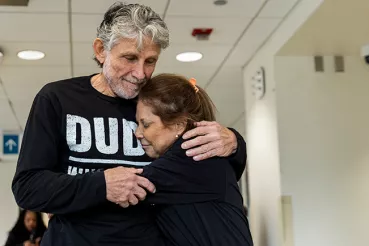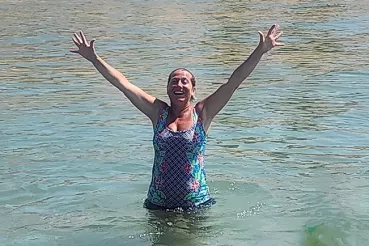Christine Quaini was a painter whose art inspired many — especially her husband.
“Our apartment is bursting with art,” said Duane Quaini. “Having art and music at home or in my office has always been both soothing and exciting to me.”
Before Christine passed away in 2017, she spent 32 days in Rush’s intensive care unit, or ICU. Duane continuously watched her nurses in action, providing Christine the best medical care and making her as comfortable as possible.
“Not only was she professionally cared for at the highest level, but she was lovingly cared for by people who treated her like family,” said Quaini. “The professionalism of the care is what you expect, but the humanity takes it to another level.”
Even when he’d call to check on her in the middle of the night, Quaini was met with the same punctuality and compassion. “No matter what time it was, every nurse I spoke with went out of their way to be helpful, and if they didn’t have the answer, they’d go find it,” said Quaini. “The consistency of the care was what really impressed me — from nurses and doctors, to fellows and specialists.”
Giving back in gratitude
In gratitude for his experience, Quaini explored ways to honor the Rush staff, as well as his wife, through a gift. Already a longtime supporter of Rush, Quaini worked alongside Angelique Richard, RN, PhD, chief nursing officer at Rush University Medical Center, to create a high-impact program for patients and staff alike.
Quaini’s generous commitment, coupling outright and estate gifts, established the Christine Quaini Memorial Fund for Therapeutic Art Programs. Reflecting the demonstrated healing power of art and music, the fund will expand Rush’s expressive therapy offerings for patients and families, as well as develop similar programs for staff.
“Duane’s meaningful support amplifies our commitment to the wellness of our patients, families and staff,” said Richard. “Continued research shows that expressive therapies reduce stress, cultivate emotional resilience, instill hope and foster self-awareness — all things so necessary to our wellbeing.”
Programs involving art and music therapy — led by trained and certified experts — are increasingly being integrated into the course of care for hospital patients, especially children. Art and music therapies are also a promising aspect of larger efforts to ensure the emotional and psychological wellness of health care workers, whose wellbeing is critical to delivering the highest quality care possible to patients.
“Chris’ work as an artist brought tranquility and inspiration to others each day,” said Quaini. “If even just one person smiles or feels a little bit better because of a piece of music or art, the program will have served its very valuable purpose.”
To learn more about how you can support therapeutic art programs at Rush, contact Brigid Mullen at (312) 942-4460 or brigid_t_mullen@rush.edu.




